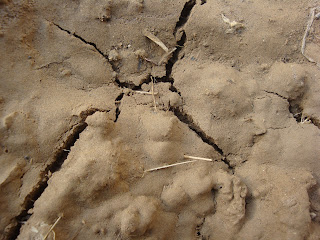Being excited to see and experience vegetations in Northern part of India, visited the state of Rajasthan and Punjab, could not travel extensively, however could visit few places and so sharing few images.
 The fertile plains of Punjab boast of producing about two-third of the food grains produced annually in India. This state is blessed with climatic differences which results in a variety of soil and henceforth into a wide range of crops and vegetation
The fertile plains of Punjab boast of producing about two-third of the food grains produced annually in India. This state is blessed with climatic differences which results in a variety of soil and henceforth into a wide range of crops and vegetation
South-western Punjab is mainly dominated by calcareous soil which includes desert soil and sierozem soil. The pH value in this zone ranges from 7.8 to 8.5 and also have grey and red desert soil, calsisol soil, regosol soil and alluvial soil. The soil of central Punjab ranges from sandy loam to clayey with pH value from 7.8 to 8.5 making alkalinity and salinity problematic for this place. The alluvial soil of this zone can be widely described as arid and brown soil or tropical arid brown soil. The soil in Eastern Punjab is loamy to clayey.
Punjab is rightly called India's bread-basket for its huge production of wheat. The other main vegetables and fruits grown in abundance in the state of Punjab are potatoes, chilies, oranges, pomegranates, apples, peaches, figs, mulberries, apricots, almonds, plums, mangoes, grapes, pears, litchis and lemons. Sugarcane, maize and cotton are grown in abundance in Punjab as well as barley, millet, oil-seeds, carrots, peas, beans, onions, turnips, cucumbers, and melons. Scorching heat during the summer months sometimes destroy the vegetation but with the downpour by south-west monsoon the entire land returns to its lush green color.

No comments:
Post a Comment